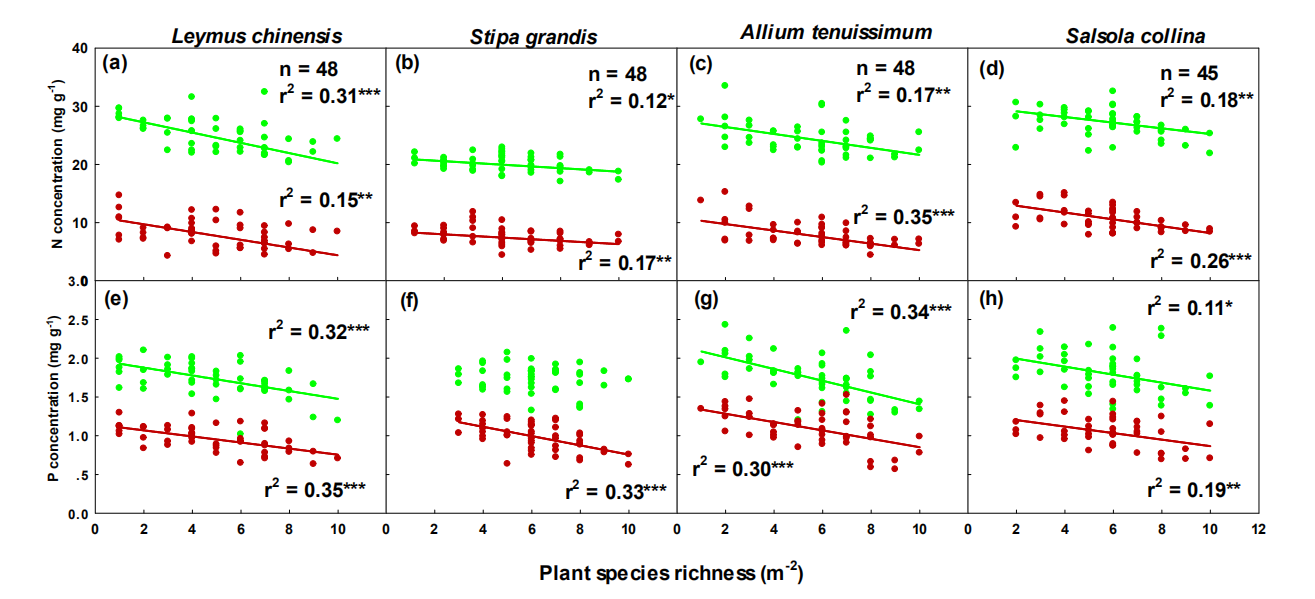Biodiversity is the basis for many fundamental ecological services. The anthropogenic-driven decline of global biodiversity is accelerating, raising concerns about the reduction and unsustainable of ecosystem service following biodiversity losses.
Complementarity in resource use among different plant species is one of the mechanisms driving the positive relationship between biodiversity and productivity. However, the intra-specific variation in plant resource use in response to biodiversity is generally overlooked.
Scientists from Institute of Applied Ecology, Chinese Academy of Sciences, examined the nutrient status of green and senesced leaves of four dominant plant species living in communities with different plant species richness. Further, they calculated nutrient resorption for each species, an index of nutrient conservation.
They found that plants in higher-diversity communities could re-translocate more nutrients from senescing leaves to living organs, which may facilitate the reproduction and vegetative regrowth in the next year.
This conservative nutrient-use strategy may contribute to the positive relationship between biodiversity and productivity, and at the same time, may help buffer plants against variability in soil nutrient availability and make the population more stable over time.
Their findings entitled " Species richness mediates within‐species nutrient resorption: Implications for the biodiversity–productivity relationship" were published in Journal of Ecology recently.

Fig 1. Changes of plant nutrient concentration with the increasing species richness in plant communities (Image by LV Xiaotao).